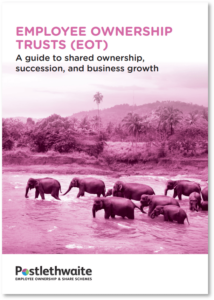On 1 July 2022, Minehead Medical Centre in Somerset became the first individual NHS medical practice in the UK to be owned by an employee ownership trust (EOT).
Introduced by the UK Government in 2014, over 1000 businesses in the UK are now owned by an EOT.*
General medical practices, on the frontline as primary patient care providers, currently share many of the same challenges as other parts of the NHS. But they also face their own unique challenges which can be serious enough not just to stretch their ability to provide care but in some cases threaten their long term viability.
Minehead’s move is intended to help it address these challenges, giving it long term stability as an excellent provider of primary care.
In this blog, I will look at what Minehead has done and why it decided on this change. I will also address whether other practices might want to consider doing the same.
Minehead’s move to employee ownership
What did they do?
Up until 1 July 2022, Minehead Medical Centre operated as a partnership, owned by three individual partners who were all doctors and paid to provide primary care services under a contract with the local Clinical Commissioning Group (now called the Integrated Care Board and publicly known as NHS Somerset). The partners had responsibility for running the practice, employing staff and contracting with external service providers. As a partnership, their remuneration was taken from the profit left over after all costs were covered.
The ownership of the practice was transferred by the partners to an employee ownership trust (EOT). This involved two key stages.
Stage 1. Setting up a limited company
First, the three partners transferred the assets and liabilities of the partnership to a limited company in which they were the sole shareholders. This took over the contract to provide medical services.
Stage 2. Transitioning shares to EOT
Second (and on the same day) they transferred nearly all their shares to an EOT, making it the owner of the practice (2% is retained by the former partners to ensure compliance with legislation that requires some ownership by a doctor).
An EOT is an arrangement under which the practice is now owned for the benefit of all employees working in the practice. It therefore represents a significant change from the previous ownership by the practice’s three doctor-partners.
The former partners are now employees and are paid a salary, like everyone else working in the practice. The EOT is run by five trustees, all employees drawn from across the practice.
Why did they do it?
To recruit and retain
One particular challenge facing the practice is recruitment, particularly because of its rural location. This is common for many general medical practices.
The move to employee ownership is intended to help make the practice a more attractive place to work. It has a high quality leadership team and committed and capable staff. Making everyone an owner reflects this, giving staff a greater say. Employees can develop their careers in a stable and collaborative environment.
For leadership flexibility
It is no longer necessary for senior leadership to require a personal investment in being a partner (often now a barrier to recruitment), nor to put in place elaborate arrangements to buy back a retiring partner’s ownership stake. Leadership is separated from ownership, creating significant new flexibility in how a practice’s leadership needs are addressed and removing many of the strings that are traditionally attached to taking on a senior leadership role.
This preserves the longstanding model (going all the way back to the NHS’s establishment) of primary care being provided by independent contractors but aims to bring it up to date and fit for today’s challenges. Whilst some argue that primary care should now be taken over by hospitals, there are big question marks over whether hospital trusts have either the capacity or skills needed to do this.
Should other medical practices be considering this?
Employee ownership is unlikely to be a panacea for every practice. Some may feel they are perfectly viable as they are and there is no need to change in this way. Others may be in need of change but are not yet ready, for example because they first need to fill major gaps in leadership, improve quality of care or employee morale.
But for those essentially viable practices that need to make themselves fitter for the coming years and feel the potential benefits of employee ownership could help them to do so, it may be worth exploring.
As anyone involved in an employee-owned company will testify, success will always be a journey, needing commitment from everyone to assist in building a strong culture and have engaged employees. Any practice contemplating this change will need to be prepared to invest in this.
* WHITE ROSE EMPLOYEE OWNERSHIP CENTRE FIGURES ARE PROVIDED BY PROF A. ROBINSON (UNIVERSITY OF LEEDS) AND PROF A.PENDLETON (UNSW)


